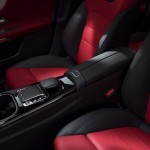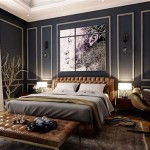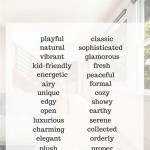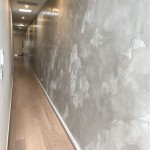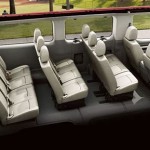Modern Restaurant Interior Design Ideas 2024
The landscape of restaurant interior design is perpetually evolving, reflecting shifts in consumer preferences, technological advancements, and broader cultural trends. In 2024, modern restaurant design emphasizes creating immersive experiences that cater to a diverse clientele while prioritizing sustainability, functionality, and aesthetic appeal. This article explores key trends and ideas shaping the modern restaurant interior design scene.
Biophilic Design and Natural Elements
Biophilic design, which incorporates natural elements into the built environment, remains a dominant force in restaurant design for 2024. The aim is to create a connection with nature, reducing stress and enhancing overall well-being for diners. This is achieved through a variety of methods, including the strategic use of plants, natural light, and organic materials.
Indoor greenery is no longer limited to potted plants; restaurants are increasingly incorporating living walls, vertical gardens, and even small indoor trees to create a lush and inviting atmosphere. The selection of plant species often considers local climate and maintenance requirements, ensuring the longevity and health of the greenery. Furthermore, the integration of natural light is crucial. Large windows and skylights are utilized to maximize daylight exposure, reducing the reliance on artificial lighting and promoting a sense of spaciousness. When natural light is limited, designers are using full-spectrum lighting to mimic natural sunlight.
The choice of materials also plays a significant role in achieving a biophilic design. Wood, stone, bamboo, and cork are favored for their natural textures and warm tones. These materials are used for flooring, wall coverings, furniture, and decorative elements. Recycled and reclaimed materials are also popular choices, aligning with sustainable design principles. For instance, reclaimed wood can be used to create unique and characterful furniture pieces, while recycled glass can be incorporated into lighting fixtures or decorative accents.
The implementation of water features, such as small fountains or cascading walls, further enhances the biophilic feel. The sound of running water contributes to a sense of tranquility and can help to mask ambient noise. Furthermore, natural patterns and textures are replicated in fabrics, wallpapers, and artwork. Organic shapes and motifs are used to create a cohesive and harmonious design.
The color palette often complements the natural elements, with earthy tones like greens, browns, and blues dominating the space. These colors evoke a sense of calm and connection to nature. Accent colors, inspired by flowers and foliage, can be used to add pops of vibrancy and visual interest. The overall goal is to create an environment that is both aesthetically pleasing and conducive to relaxation and enjoyment.
Technology Integration and Smart Dining
Technology is becoming increasingly integral to the dining experience, and modern restaurant design reflects this trend. Smart dining solutions are being incorporated to enhance efficiency, personalize service, and create a seamless and interactive environment for customers. This includes everything from automated ordering systems to customized lighting and soundscapes.
Digital ordering systems, such as interactive kiosks and tablet-based menus, are becoming more prevalent. These systems allow customers to browse the menu, customize their orders, and make payments without the need for a server. This can help to reduce wait times and improve order accuracy. Furthermore, these systems can be integrated with loyalty programs and data analytics to provide personalized recommendations and track customer preferences.
Smart lighting systems allow restaurants to adjust the ambiance based on the time of day, the type of event, or even the mood of the diners. Lighting can be controlled remotely, allowing for dynamic adjustments to brightness, color temperature, and direction. This can create a more intimate and inviting atmosphere for evening diners, or a brighter and more energizing environment for daytime patrons.
Soundscapes are also being carefully curated to enhance the dining experience. Restaurants are using sophisticated sound systems to create immersive audio environments. This includes playing background music that is tailored to the restaurant's theme and target audience, as well as incorporating ambient sounds like nature sounds or cityscapes. Noise-canceling technology is also being used to reduce unwanted background noise, creating a more peaceful and relaxing atmosphere.
Table management systems are becoming more sophisticated, allowing restaurants to optimize seating arrangements and minimize wait times. These systems can track table availability in real-time, predict demand, and automatically assign tables to customers. Furthermore, they can send notifications to customers when their table is ready, allowing them to explore the surrounding area while they wait.
Finally, technology is being used to personalize the dining experience. Restaurants are collecting data on customer preferences and using this information to provide tailored recommendations and offers. This can include suggesting dishes based on dietary restrictions, allergies, or previous orders. Furthermore, some restaurants are using augmented reality (AR) technology to enhance the menu browsing experience. Diners can use their smartphones to scan the menu and view 3D models of the dishes, allowing them to make more informed decisions.
Multifunctional Spaces and Adaptability
Modern restaurant design emphasizes flexibility and adaptability, reflecting the evolving needs of both diners and operators. Multifunctional spaces that can transform throughout the day or accommodate different types of events are becoming increasingly popular. This allows restaurants to maximize their space utilization and cater to a wider range of customers.
Modular furniture is a key component of multifunctional spaces. Tables, chairs, and seating areas can be easily reconfigured to create different layouts for different occasions. For example, a restaurant might use long communal tables for large groups during lunch service, and then break them down into smaller, more intimate tables for dinner service. Foldable partitions and movable walls can also be used to create private dining areas or divide the space into smaller zones.
Lighting plays a crucial role in transforming the atmosphere of a space. Dimmable lights and adjustable color temperatures can be used to create different moods for different times of day. For example, a restaurant might use bright, energizing lighting during breakfast and lunch service, and then switch to warmer, more subdued lighting for dinner and evening events.
Sound control is also important for creating adaptable spaces. Acoustic panels and sound-absorbing materials can be used to reduce noise levels and create a more intimate atmosphere. Sound systems can be programmed to play different types of music depending on the time of day or the type of event. For example, a restaurant might play upbeat music during lunch service and then switch to more relaxed music during dinner.
The design of the bar area is also being rethought to accommodate different types of customers. Some restaurants are creating separate bar areas that are distinct from the main dining room, while others are integrating the bar into the dining area to create a more social atmosphere. Flexible seating options, such as bar stools, lounge chairs, and high-top tables, allow customers to choose the seating arrangement that best suits their needs.
Finally, outdoor spaces are being designed to be more versatile and adaptable. Patios and terraces can be covered with retractable awnings or pergolas to provide shade and protection from the elements. Outdoor heating and cooling systems can be used to extend the outdoor dining season. Flexible seating arrangements and modular furniture can also be used to create different layouts for different events.
The goal is to create a space that can be easily transformed to meet the changing needs of diners and operators. This requires careful planning, flexible design, and the use of adaptable materials and technologies. By embracing multifunctional spaces, restaurants can maximize their space utilization, cater to a wider range of customers, and create a more dynamic and engaging dining experience.
In addition to these core trends, several other factors are shaping modern restaurant interior design. Accessibility is becoming increasingly important, with restaurants designing spaces that are accessible to people of all abilities. Sustainability remains a key consideration, with restaurants prioritizing eco-friendly materials and energy-efficient design. Personalization is also a growing trend, with restaurants creating spaces that reflect their unique brand identity and appeal to their target audience. As the restaurant industry continues to evolve, interior design will play an increasingly important role in creating memorable and engaging dining experiences.

Restaurant Interior Design Trends For 2024 A Glimpse Into The Future

21 Restaurant Interior Design Ideas For 2024 Touchbistro
21 Restaurant Interior Design Ideas For 2024 Touchbistro

Modern Restaurant Design Trends In 2024

A Preview Of What Lies Ahead For Restaurant Design Trends
21 Restaurant Interior Design Ideas For 2024 Touchbistro
21 Restaurant Interior Design Ideas For 2024 Touchbistro
21 Restaurant Interior Design Ideas For 2024 Touchbistro
21 Restaurant Interior Design Ideas For 2024 Touchbistro

20 Latest Restaurant Interior Design Ideas For 2024 In Dubai
Related Posts

